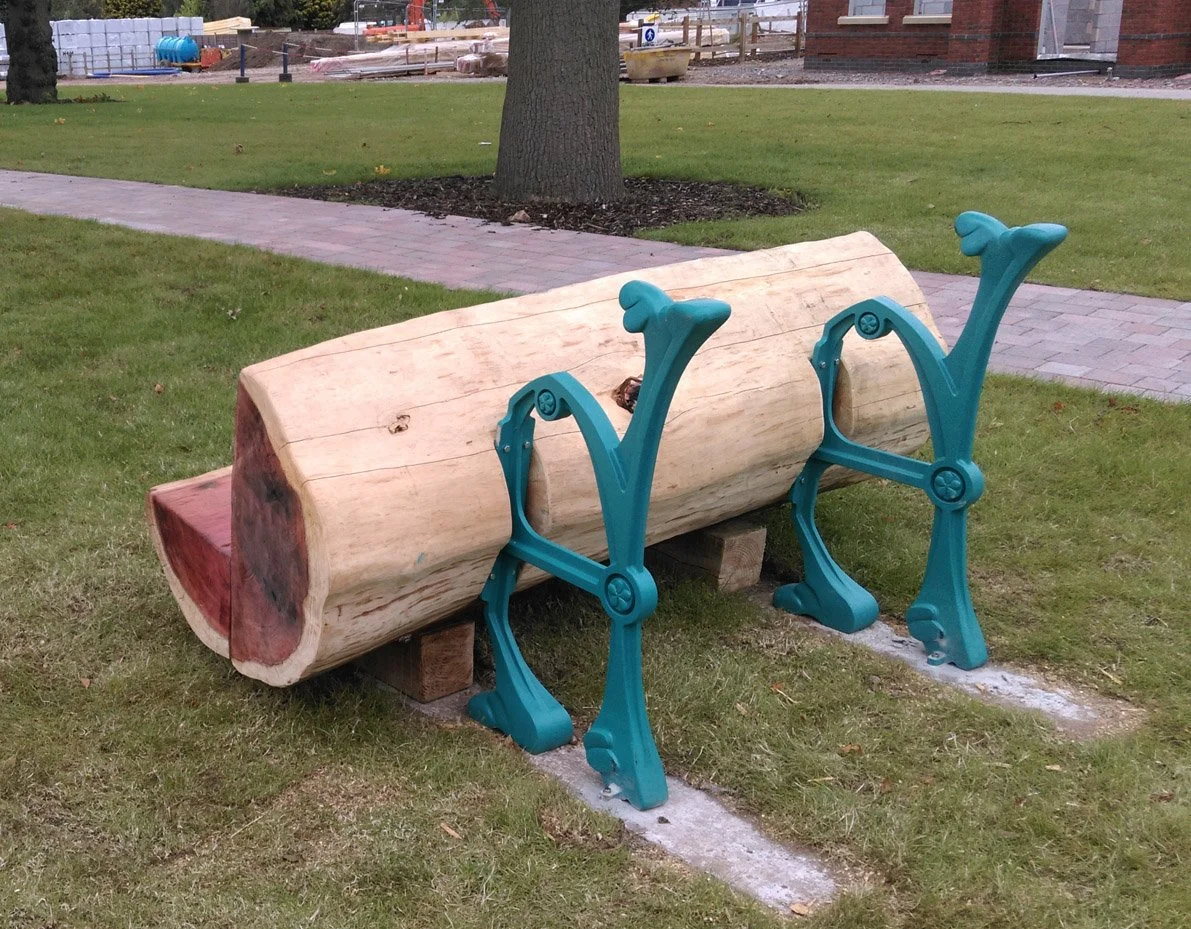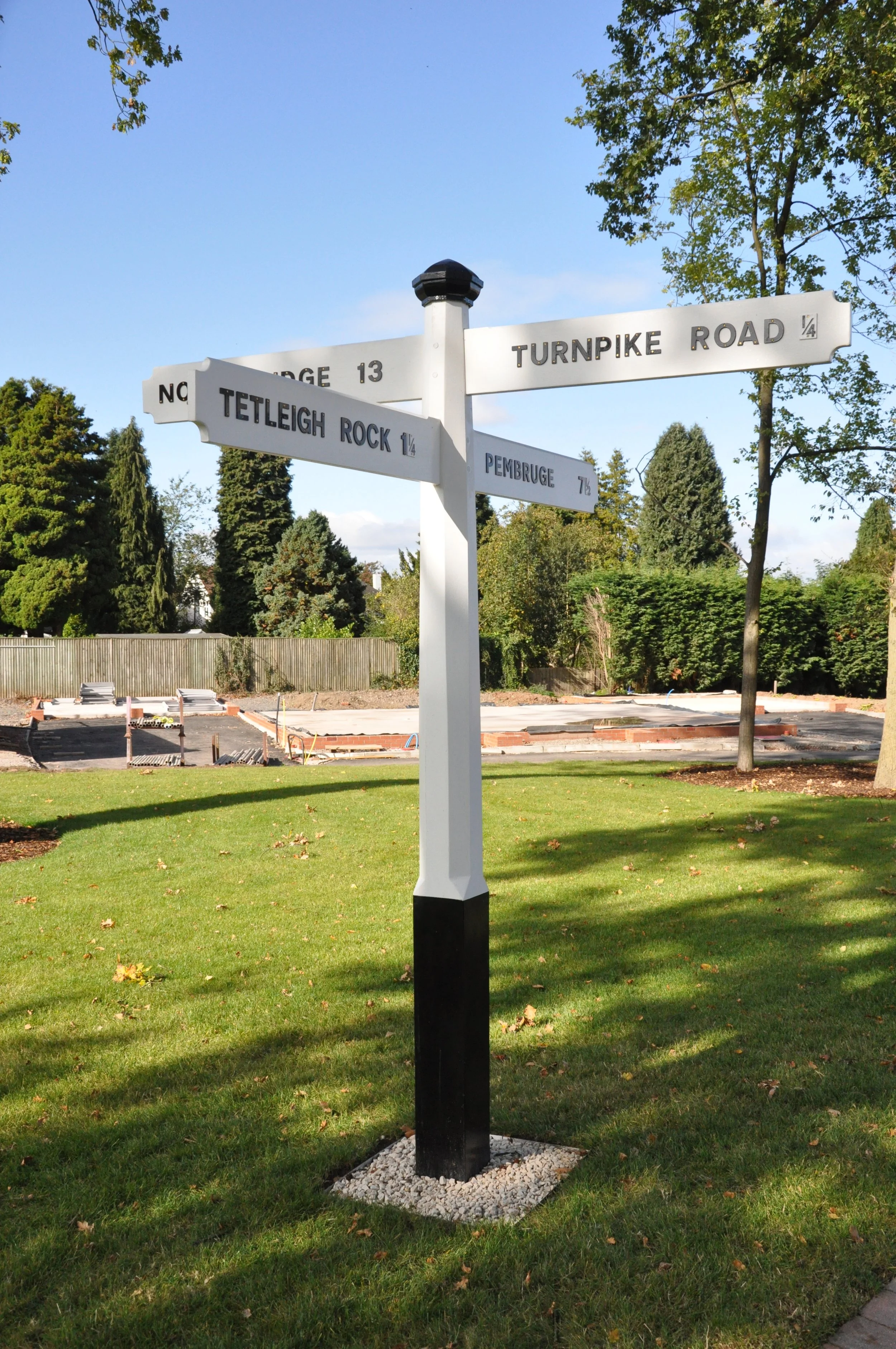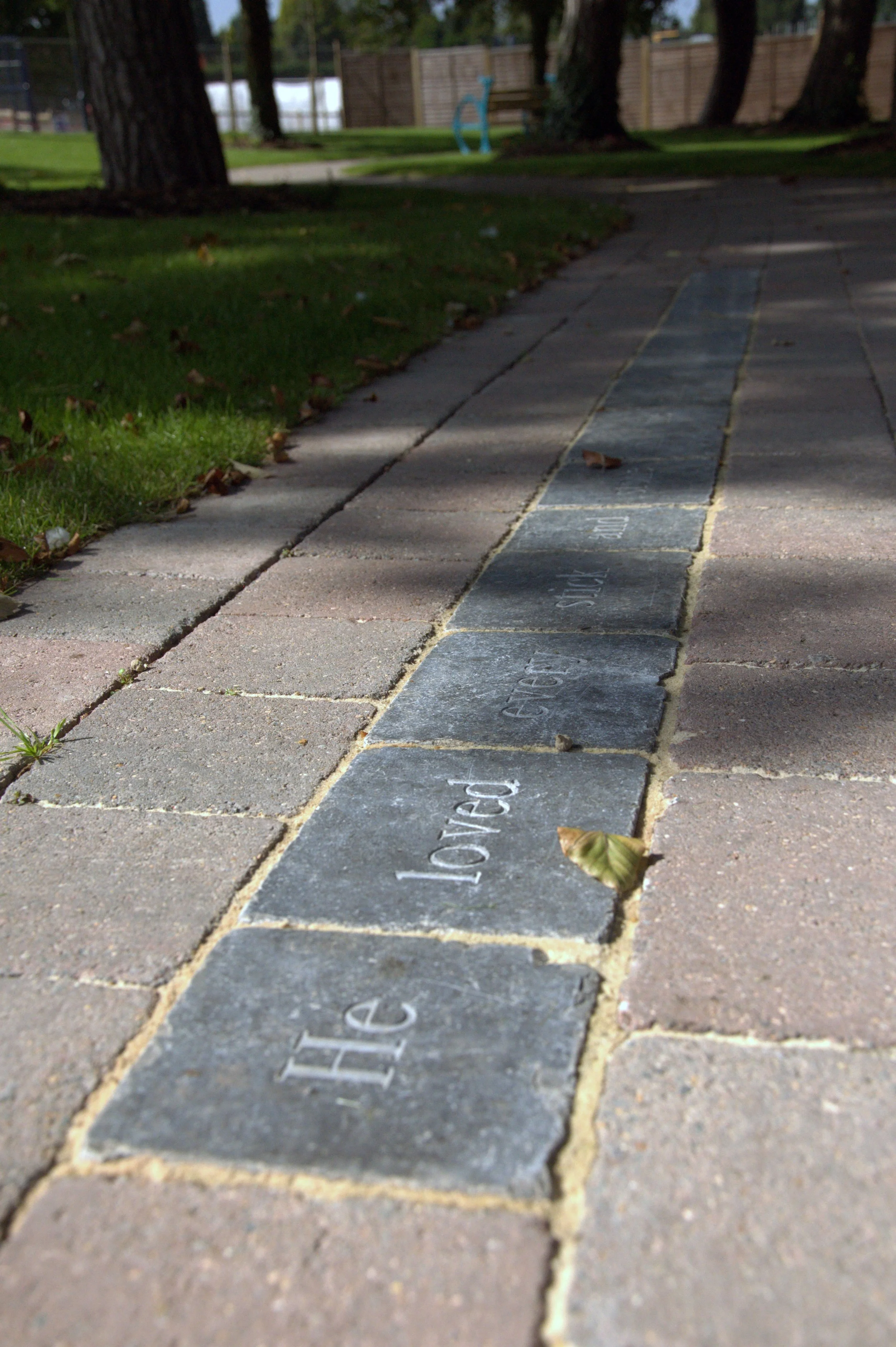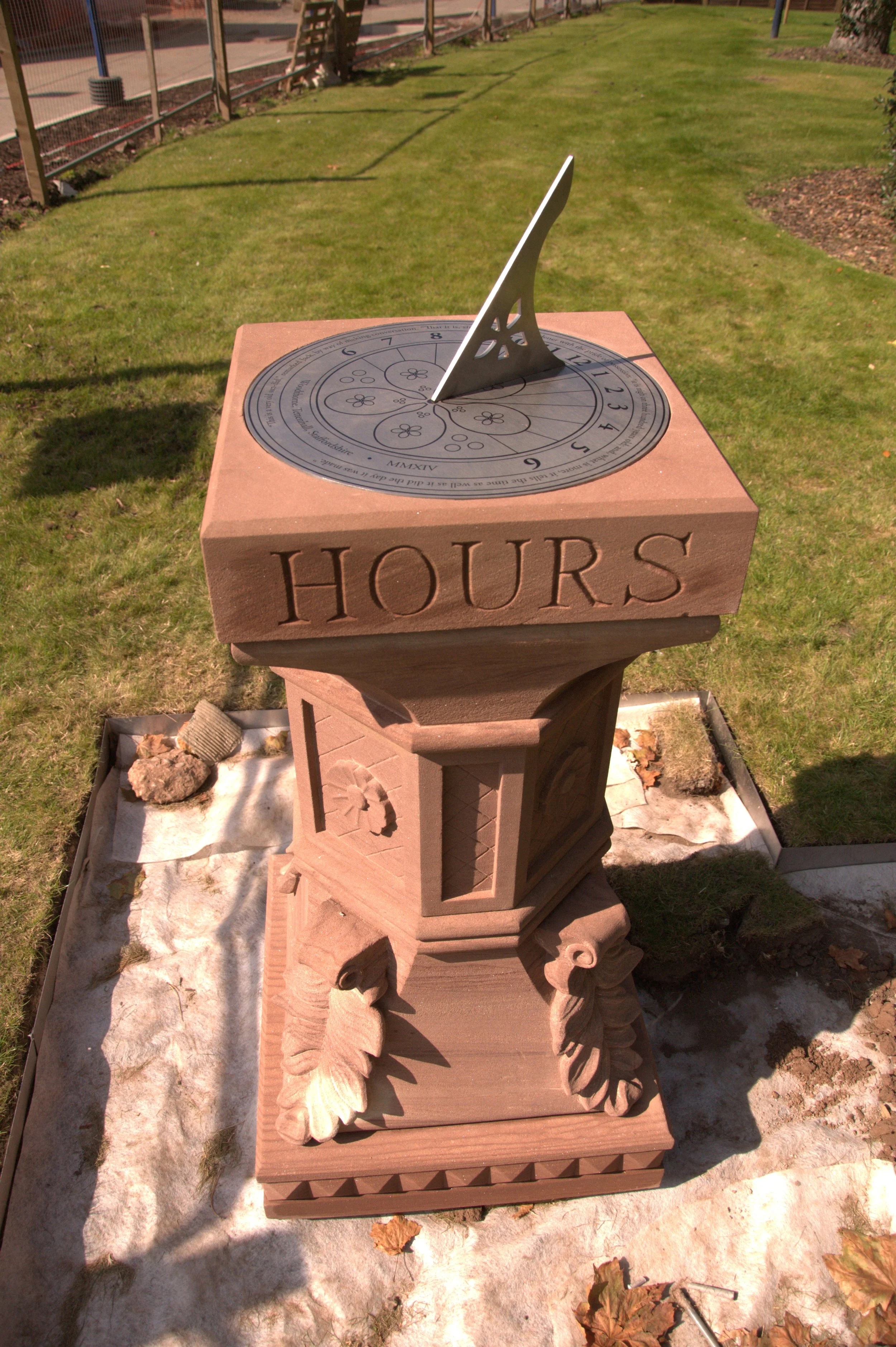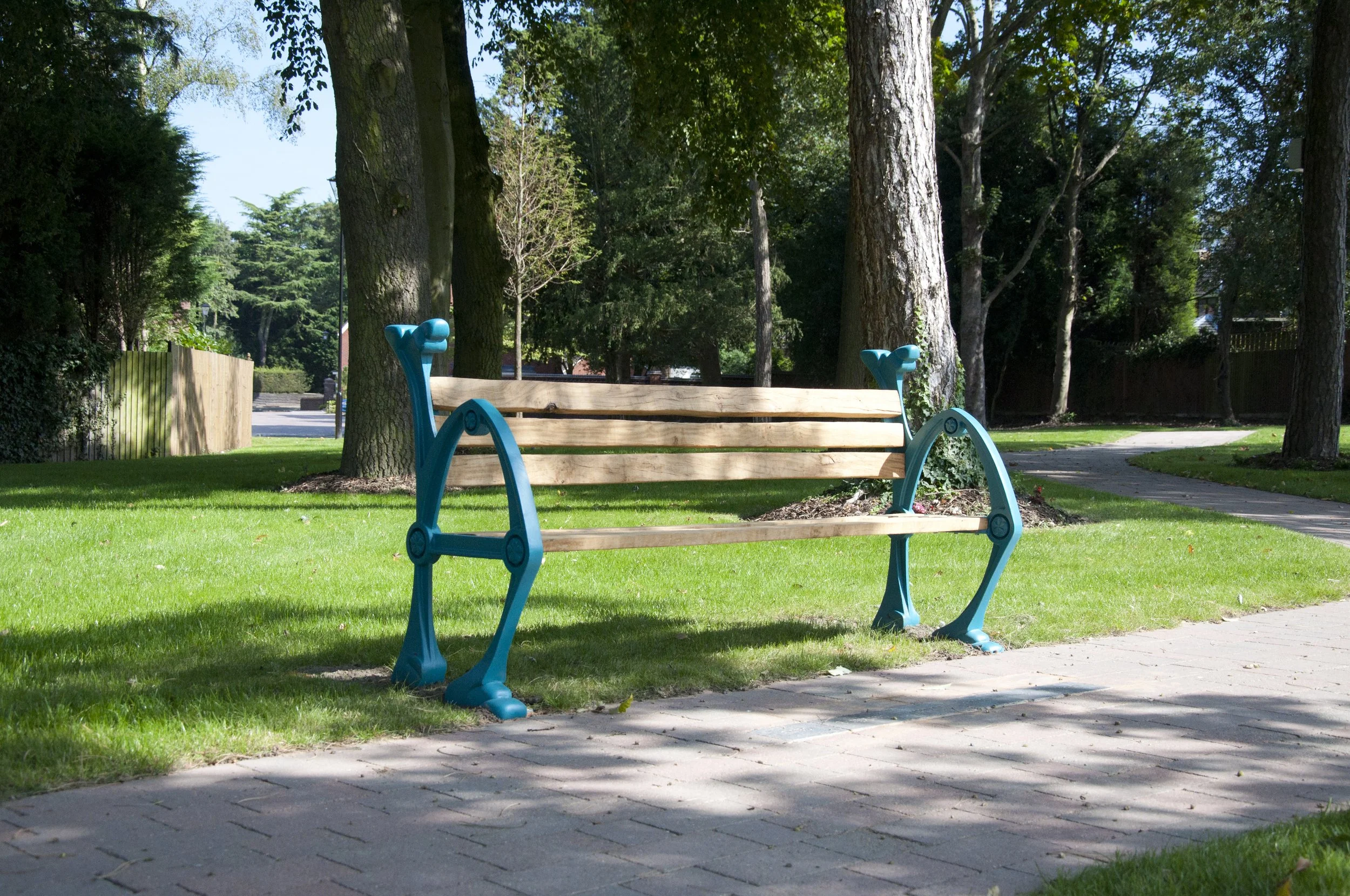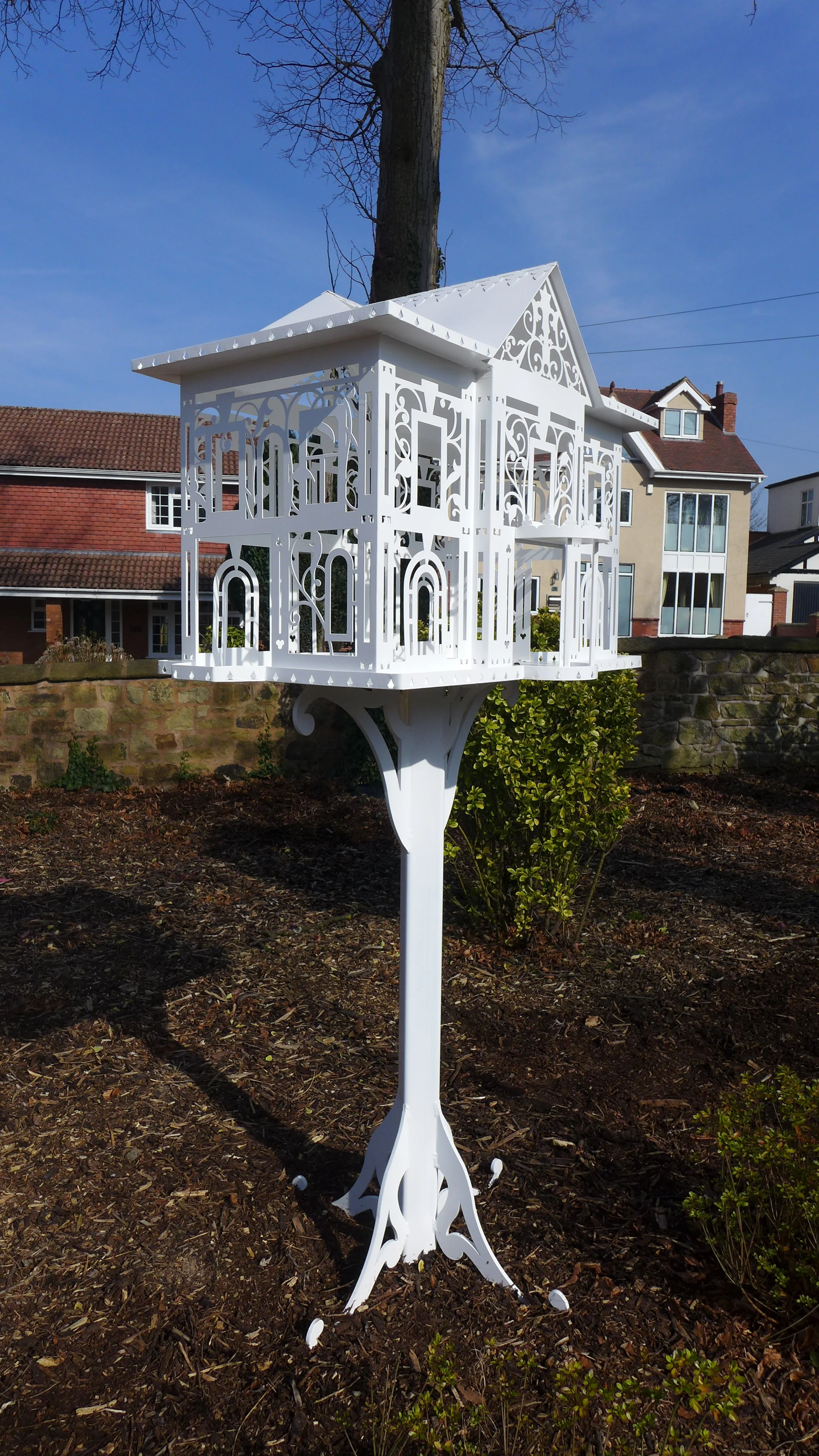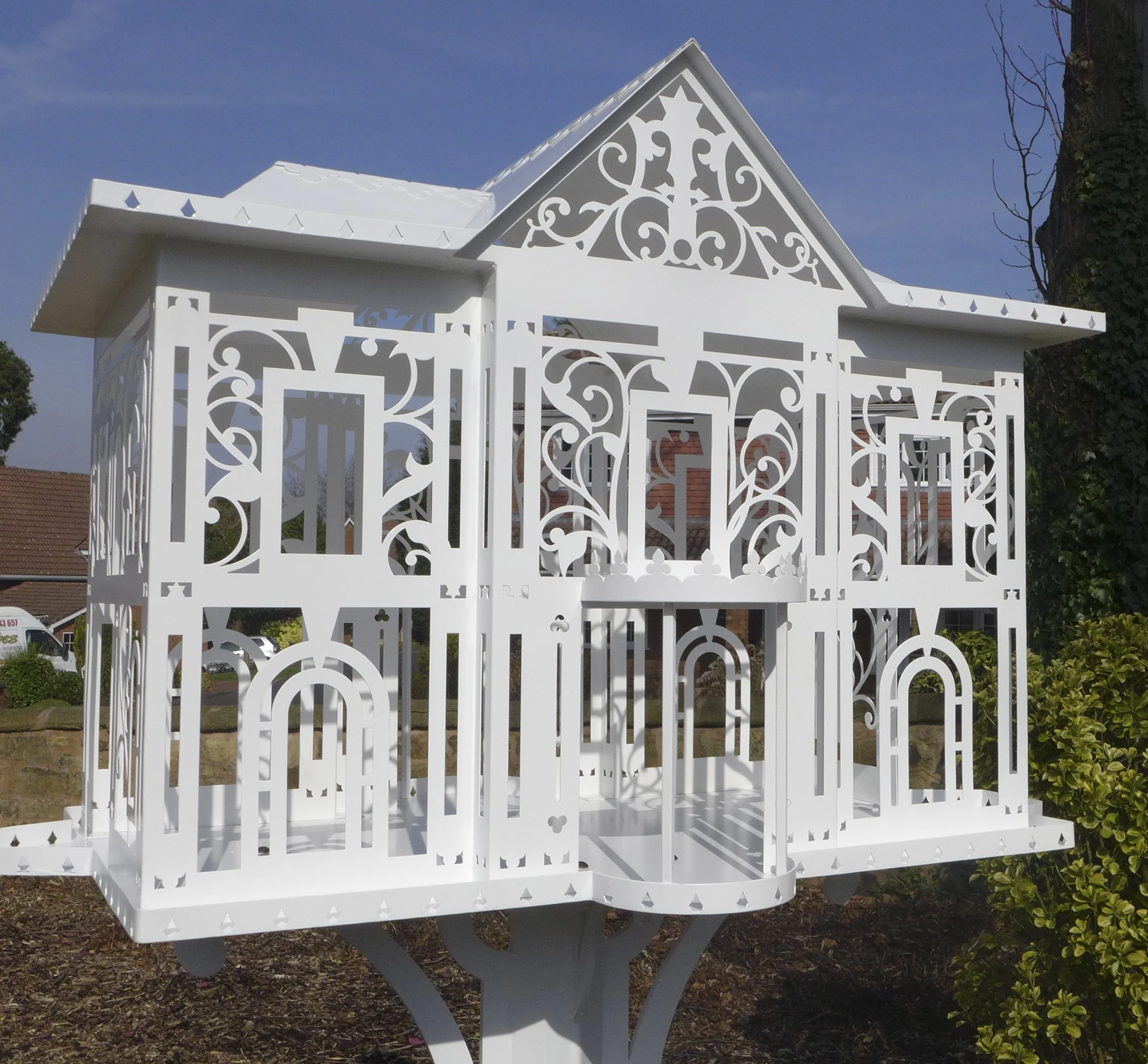Woodthorne
Client: David Wilson Homes
IPublic art scoping, deign and installation in collaboration with artist Stuart Mugridge and Xtraweld.
[2014]
As a one-per-cent provision of public art to discharge s106 obligations, the project aimed to embed art thinking into the development and surpass Wolverhampton City Council's SPG19 'Provision for Public Art' [1998]. Given the timing of artist involvement and what proved a relatively new approach for David Wilson Homes, an integrated scheme was eventually favoured, to enrich the nature and usage of the site. To successfully meet planning requirements, various elements including birdhouses, benches, paving text, a signpost and sundial were installed in the new pocket parks that once part of the Woodthorne estate and gardens. A publication was also created for the surrounding neighbours, local libraries and schools, though it predominantly served as a moving-in gift for new residents.
The Woodthorne Estate was once home to Henry Hartley Fowler, First Viscount Wolverhampton. His daughter Ellen Thorneycroft Fowler (9 April 1860 – 22 June 1929) was an English author of popular romances, and a poet and children's writer. As a foreword to Ellen Thorneycroft Fowler's book, Forgotten Mercia, Carl Chinn remarks on how important her writing is. For a place so synonymous with coal, steam and iron it received "scart notice in any form of writing". It is obvious that she set her novels often directly in The Black Country and surrounding areas, simply changing the name of the town slightly: Tettenhall became Tetleigh, Wolverhampton became Silverhampton. Ellen herself said, "I prefer to deal with real places, though I don't always do so. You are so apt to mislay your rivers or to lose a church if you are dealing with a place that exists solely within your own imagination".
On a first visit to the site we saw the 'specimen shrubs' that Ellen described at Woodthorne in her novel Fuel of Fire; the romantic rural 'bright green border' of The Black Country staging Henry Hartley Fowler's love for his modest house; and the agricultural fields beyond and beneath.
We decided to appropriate Ellen's book title Double Thread (1899) as a way to think about how real and imaginary (or Victorian romantic) elements place relate and entwine with each other. We created follies and texts that might engage residents with curiosity and delight, but also to reveal how prolific a writer Ellen was in her era.
Muchall Grove
Client: David Wilson Homes
with Xtraweld
[2014]
A public art project to create a bird table on the shared grounds of a new housing development, that evoked memories of Muchall Grove and the associated industries of Wolverhampton.
The rural edges of Penn were once home to the industrious Victorian builders of Wolverhampton. Muchall Grove was built by prominent local figure Charles Clark, a former Wolverhampton Mayor and co-founder of T and C Clarke and Co Ltd, one of the largest foundreies in the town. http://www.historywebsite.co.uk/Museum/metalware/Clark/ShakespeareFoundry.htm
After being a member of the Corporation since its formation as a municipal body, the once councillor, alderman, and chief magistrate became mayor of Wolverhampton in 1860. He built Muchall Grove on part of the rural grounds of Muchall Hall also around 1860, after the death of it's owner, William Thacker. After Charles Clark it was occupied by ironfounder Edward Thomas Wright. On it sale in 1908 The Grove boasted pleasure grounds, kitchen gardens, stables, pigeon houses, tennis courts and shaded woodland walks.
As both the home of a major award-winning producer of iron holloware and former mayor, "Muchall continues in name reminding us of the district's illustrious past." [Angus Dunphy, Penn and Ink]

